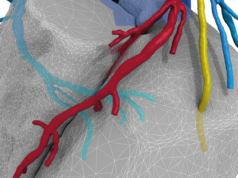
New data from the ORBITA trial indicates percutaneous coronary intervention (PCI) does not significantly reduce exercise time compared with a sham procedure in patients with stable disease regardless of baseline fractional flow reserve (FFR) and instantaneous wave free ratio (iFR) values. However, this analysis does show that progressively lower FFR/iFR values predict a progressively greater benefit of PCI on stress echocardiography ischaemia.
ORBITA, which was presented at the 2017 Transcatheter Cardiovascular Therapeutics (TCT) meeting (29 October–2 November, Denver, USA), prompted heated debate in the interventional cardiology community when it indicated that PCI did not provide a benefit over a sham procedure in terms of exercise time in patients with stable disease. A key criticism of the study at the time was that there were several patients in the study who would not have undergone PCI in clinical practice—approximately, a third of patients had FFR/iFR values that were above the standard thresholds (0.80 and 0.89, respectively) for intervention—and, therefore, this may have affected the results.
Presenting the new analysis at EuroPCR (22 May–25 May, Paris, France), ORBITA investigator Rasha Al-Lamee (Imperial College London, London, UK) commented that physiological assessments (with either FFR or iFR) was performed prior to randomisation but investigators were purposely blinded to the results of these assessments. “ORBITA was searching for the FFR/iFR values cutpoint for angina relief and, therefore, had to enrol patients eligible for PCI with a range of FFR/iFR values,” she explained. She added that the aim of this new analysis, using regression modelling, was to assess the “placebo-controlled efficacy of PCI as predicted by prerandomised FFR and iFR.”
In the original analysis, dobutamine stress echocardiography score—as a marker of reduction in ischaemia—was significantly improved in the patients who underwent PCI (103) compared with those underwent a sham procedure (93). Al-Lamee commented that, in this analysis, there were significant interactions between both FFR and iFR values and improvement in stress echocardiography score, stating: “As FFR/iFR values decrease there is a greater impact on reduction in ischaemia score. Both correlations are strongly statistically significant [p<0.0001 for both].”
PCI was also shown to significantly improve freedom from angina, with a number needed to treat of five, compared with placebo. However, there was no evidence of an interaction between either FFR or IFR values and benefit of PCI on freedom from angina. The new analysis also showed that FFR/iFR values did not appear to impact the benefit of PCI on quality of life—in the main analysis, there were no significant differences between the PCI and sham procedure groups in terms of this endpoint.
Furthermore, there was also no evidence that physiological assessment values impacted the effect of placebo-controlled PCI on exercise time. Al-Lamee observed: “The study was powered to expect an exercise time difference of more than 30 seconds [the difference found in the study] between the two groups. When you end up with an exercise time that is far smaller than you thought it would be, you are under powered to look at any stratification in terms of FFR/iFR.” She added that that she “absolutely agreed” with a point made by Martin Leon (Center for Interventional Vascular Therapy, Columbia University Medical Center, New York Presbyterian Hospital, New York, USA) that exercise time may not have been the best method of assessing the benefit of PCI. “The US FDA recommends exercise time for placebo-controlled [angina] drug trials but, if I was to do this trial again, it is probably not the primary endpoint I would choose. Perhaps, we should have considered that opening up the stenosis does not necessarily work in the same way as drugs. You can imagine that exercise time would be heavily impacted by placebo and patients knowing that the stenosis had been fixed; or in our study, not being sure it had been fixed,” Al-Lamee said.
Regarding what endpoint should have been used instead of exercise time, she noted that a binary endpoint, such as freedom from angina, would have been “much easier” than a gradient of exercise scores. She noted: “I do think reduction in ischaemia is an important endpoint and perhaps when we look at further trials like ISCHAEMIA, we might find that this correlates with hard endpoints.”
ISCHAEMIA is an ongoing study that seeks to identify the best approach—invasive vs. conservative therapy—for managing stable heart disease.
In terms of the implications of the new analysis for clinical practice, Al-Lamee told Cardiovascular News: “What this analysis shows once again is that the link between stenting an epicardial stenosis and relief of ischaemia on stress echo, iFR and FFR is predictable. However the correlation with symptom relief is complex and more difficult to predict.”
Coinciding with its presentation, the physiological-stratified analysis of ORBITA was published in Circulation.










